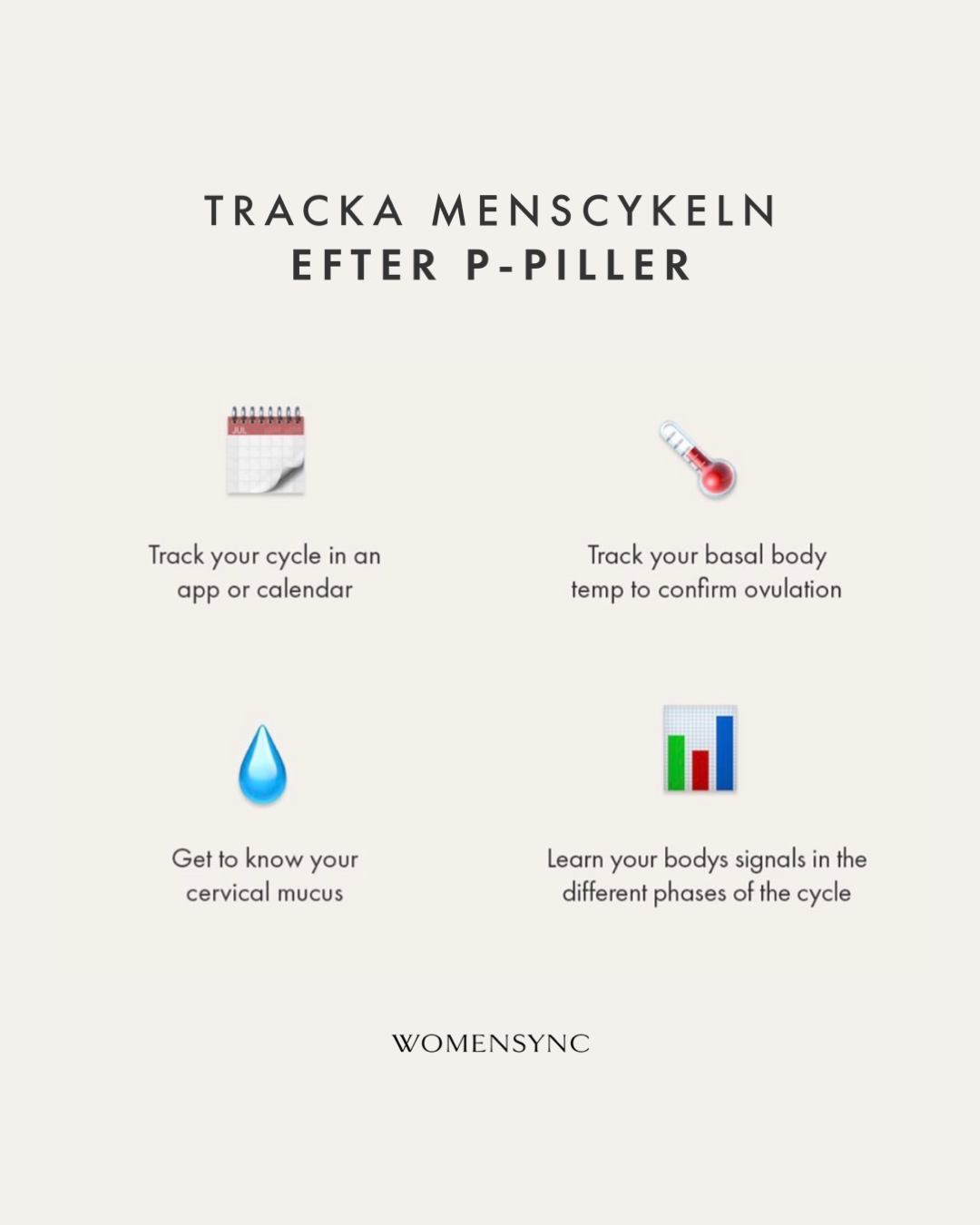Are you considering about discontinuing birth control pills, or have you already done so? Are you curious about understanding your body and observing its natural rhythms without hormonal contraception? In this blog post, we provide comprehensive insights to help you navigate your menstrual cycle after discontinuing hormonal contraceptives like birth control pills. We discuss methods for tracking your cycle, recommend what we believe to be the best app, explain how to measure body temperature accurately, and offer guidance on restoring a balanced and regular menstrual cycle.
What happens when you stop taking birth control pills?
We acknowledge that discontinuing the pill can be confusing, particularly if you have been taking it since your teenage years and continued for an extended period. If you're contemplating quitting, we suggest reading the following posts to facilitate a smooth transition.
Regardless of the reason why you choose to stop using birth control pills, different things can happen in your body when you stop. Some women regain regular ovulation and periods immediately when they stop, while for others, it may take several months or even years. We know it can feel frustrating if it does not kick in right away, but that's completely normal. However, if it takes more than 6 months, you should contact your women's clinic or one of Womensync's experts.
Physiologically, birth control pills suppress ovulation in the body. When ovulation does not occur, you do not experience a "true" period, even if you have a "bleed." The bleeding during the pill-free interval is termed withdrawal bleeding. If you've been on birth control pills for an extended period, it might take some time for your body to reestablish its natural rhythm after discontinuation.
In connection with stopping birth control pills, it is not unusual to experience various symptoms. In addition to the absence of ovulation and menstruation, symptoms such as nutritional deficiencies, acne and PMS can be common. To facilitate the transition and possible imbalances, it can therefore be powerful to support the body with possible nutritional supplements in case of nutrient deficiencies, regulate your blood sugar through diet, manage stress and be patient. The important thing is to know that the symptoms are normal and that it is possible to achieve balance through tools in your lifestyle, which we will tell you more about below.
How can I start to track my menstrual cycle?
Track your cycle in an app or calendar
The initial step in understanding your menstrual cycle is to begin tracking it. You can use either an app or a diary, depending on your preference. Some apps we have personally tested and recommend include: Natural Cycles, Clue and Flo.
So, how does it work in practical terms? The first day of your period is the first day of a new cycle. So when you get your period, you enter it in the app (or your diary/calendar) and it is automatically registered as the start of a new menstrual cycle. The last day of "a cycle" will simply be the day before you get your next period.
Depending on your own needs, you can register many different aspects in your app or in your calendar. For example, you can write down how you feel, how your body feels, sex drive, energy level, secretions, mood or if you experience other symptoms such as sore breasts or pain. By writing down or recording such things, you can easily go back and then find patterns which can help predict future cycles.
To learn more about the phases of the menstrual cycle, how to know which phase you are in and how you can support each phase, we recommend you to read Womensync - for a life in sync with your female biology.
Measure your basal body temperature
The second part of tracking your menstrual cycle involves measuring your basal body temperature. Depending on where you are in your menstrual cycle, your basal body temperature will change . When you have ovulated, your body temperature rises by between 0.2-0.4 degrees, where the temperature rise lasts for at least three days (but preferably the entire phase 3, which is a sign that you are producing enough progesterone).
By measuring your basal body temperature, you can:
- Confirm when you have ovulated
- Predict when your next period will come
- Keep track of which phase you are in (when you go from phase 2 to 3)
To measure your basal body temperature correctly, you first need a thermometer that measures two decimal places as opposed to a regular one that only shows one decimal place. Your next question might then be, but where do I buy such a thermometer? It can be bought at regular pharmacies or on the Natural Cycles website.
In order for the measurement to be as accurate as possible, it is important to consider the following things:
- Take your temperature first thing in the morning before you get out of bed
- Allow the thermometer to run for at least 5 minutes before pressing the button
- Take your temperature around the same time each morning
If you want to dive deep, read this post , where we go into depth about if, how and why you should measure your basal body temperature.
Get to know your secretion
The third part of understanding your menstrual cycle is about getting to know and understand your cervical secretions. Our female fertility secretion is rarely talked about openly, but it is an important indicator of where we are in our menstrual cycle and how fertile we are. We know that many women can feel that this is the "hardest" step when it comes to getting to know their body and bike, but it is easier than it may first seem. You need to be curious, consistent and patient. Getting to know the body's signals when we have also never learned what they mean can take some time. In Naturalcycles, for example, secretions are not taken into account, but there you only track the menstrual cycle through the app and measure the basal body temperature every day. But by adding another dimension, the absence, presence and consistency of your secretions, you get a safer method of contraception.
The key to understanding your secretions is knowing the difference between a "dry day" and a "secretion day" and then writing it down. A dry day is a day where you have a dry or smooth feeling when you dry yourself and that there is nothing on the toilet paper that can be "picked up". A secretion day is a day where you can feel a more slippery/watery feeling when you dry yourself and/or you see secretions on your toilet paper that you can "pick up" and stretch between your fingers. Not everyone can pick up a quantity of clear and stretchy secretion, but it is enough that you feel the sensation for it to be a "secretion day" = a day on which you can be fertile.
We recommend that you read the following blog post to get a full understanding of how this works, or alternatively take the help of an expert to, for example, learn the Jusstice method (fertility understanding).
How can I support my body after stopping the pill?
Increase recovery and reduce stress
Recovery is one of the most important parts of our fertility and menstrual cycle. Today, many people live with low-intensity stress, sometimes high-intensity, for long periods, which can have many negative consequences on our fertility and menstrual cycle. In case of long-term stress, the body prioritizes producing cortisol instead of sex hormones - survival before reproduction. In order for the body to feel as good as possible and feel safe enough to make room for our fertility, we need to prioritize recovery in our everyday life.
Eat enough and eat a variety
Nutrition is needed to give the body the conditions for a regular and symptom-free menstrual cycle. If the body does not get the amount of food it needs, it deprioritises creating our sex hormones, which can lead to hormonal imbalances or lead to missed ovulation and periods. We need to give the body security, and eating enough signals that the body is in a safe environment. By combining fat, protein and carbohydrates in our meals, we stay full for a long time, it helps us stabilize blood sugar and gives us the building blocks to be able to produce our sex hormones.
Read more about how you can give the body the conditions for balanced hormones and for a regular cycle here and here .
To learn more about understanding fertility, we recommend you read the following posts:
Part I - Get a grip on your menstrual cycle - secretions
Part II - Understanding your menstrual cycle - tracking body temperature

